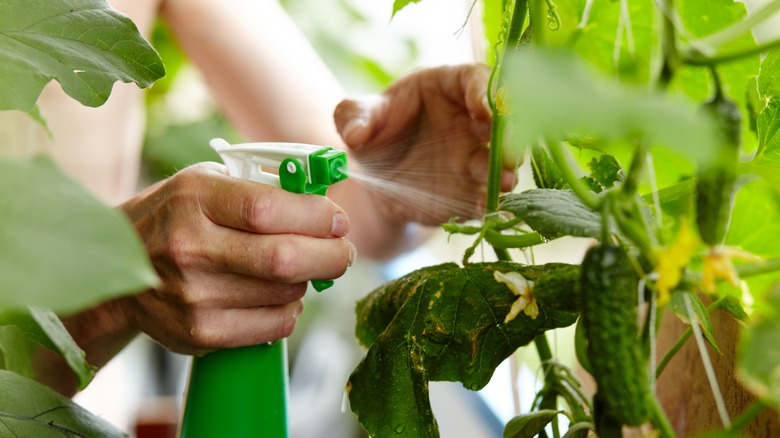What Is Leaf Spot, And Is It Wreaking Havoc On Your Plants?
We may receive a commission on purchases made from links.
Have you noticed unsightly blots of color crowning your beloved plants? From perplexing pinpricks of black and yellow to lurid spreads of brown or white, these mysterious manifestations are more than mere discolorations. Welcome to the world of leaf spot, a common plight that can turn healthy indoor and outdoor plants into a mottled haven of despair. Fungi, the main culprits, stamp their signature in various colors, from rusty reds to inky black, with sunshiny yellow and pallid white thrown in for a dramatic effect. Not to be left out of the show, certain bacteria make their presence felt, streaking leaves with brown or black colors. Liken each blemish to a battleground, where your plant's defenses are locked in mortal combat with the enemy.
While colors change with each perpetrator, the malady remains the same, afflicting your plants and urging you to rethink your gardening strategies. Effective leaf spot treatment often hinges on the potency of herbicides correctly unleashed upon the parasitic perpetrators. However, the fight is multifaceted, extending beyond just topical treatment to incorporate clever gardening practices like proper watering and strategic plant spacing. These adjustments double as a fortification against leaf spot attacks and a form of recovery for plants already embattled by this disease. Let's dive into how to embrace your inner horticultural hero to conquer leaf spots and restore your garden's or houseplants' glory.
The contributing factors and symptoms of leaf spots
Fungal pores are the culprits behind the infamous fungal leaf spot disease. When these microscopic freeloaders secure themselves onto leafy territories, they go on a reproductive spree (scientifically known as sporulation), leading to the dreadful, unsightly spots. What begins as small individual circles soon link arms, metamorphosing into a blotch. It's a horrifying spectacle as the once vibrant leaf turns into a shade of brown or black before dropping on the soil.
High air moisture levels and ineffectual air circulation set the perfect stage for the leaf spot disease drama. Other miscreants aiding and abetting those pesky fungi include the seemingly harmless routine of over-misting foliage and inadvertent splashing of water on leaves. Adding to the suspense is another plot twist, the bacterial leaf spot with its damning evidence of dark brown, slightly concave, and moist spots.
The plot thickens beyond fungi and bacteria. Smaller pests with a knack for making plants their home are part of the conspiracy, too. These sly little creatures pierce or scrape leaves, leaving behind diminutive spots mainly toward the leaf edge or one section, like a secret signature of their tiny transgressions. This case often demands sleuthing for evidence with a magnifying glass and a Sherlock Holmes-esque acumen. Mealybugs and whiteflies trigger white spots, while spider mites turn the leaf canvas into an eyesore of yellow or brown spots. Thrip invasion manifests in silver spots underneath the leaf.
How do you treat leaf spots on your plants?
Multiple physical and chemical options stand out in leaf spot treatment. Start with carefully trimming and disposing of leaves heavily stained with the disease. In addition, put some distance between your afflicted plant and your other green pals. After all, you don't want this to become an epidemic. Regarding how to control leaf spot disease without chemicals, good old baking soda will suffice. Concoct 2 tablespoons with either 2.5 tablespoons of vegetable oil or 1 teaspoon of liquid soap in 1 gallon of water. The oil and soap help the mixture adhere to the leaves. Please note that baking soda might cause some issues, so apply the mixture to a few leaves first and monitor.
If the pantry staple isn't cutting it, neem oil or a copper or sulfur-based fungicide might save the day. Seeking an all-rounder weapon against fungal and bacterial issues on plants? Serenade ASO Biological Fungicide, listed for $132.90 at ARBICO Organics, is a worthy contender. But what if insects or spider mites are behind your leafy woes? A broad-spectrum insecticide such as Sevin Insect Killer Concentrate on Amazon does the trick for insect invasion. For spider mites, try insecticidal soaps, neem oil, or a natural miticide like Grower's Ally Spider Mite Control Concentrate on Walmart. Fostering air circulation around your plants and steering clear of the leaves when watering, complemented by regular treatments, will help fortify protection against leaf spot disease.


